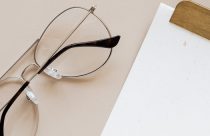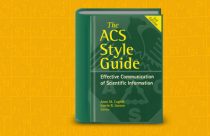A Quick Guide to the APA Style Manual

Advancing towards its 10th decade, the APA Style is one of the hallmark features of academic writing to acknowledge the source of any information included in a scholarly article. Developed by American Psychological Association (APA) in 1929, the APA Style is specified in their style guide titled as the Publication Manual of the American Psychological Association. The sixth edition of this style guide is the most recent version. Using this citation style is one way in which academic journals guard against plagiarism. APA is the preferred citation style used by the social sciences.
What is APA Style?
APA is documentation style and format for academic documents such as scholarly articles and books. Unlike some other citation styles, APA extends beyond recognizing the source of data in scholarly articles. It is most frequently used by writers and students in: Social Sciences, such as Psychology, Linguistics, Sociology, Economics, and Criminology. Business. Conforming to the APA Style also involves certain formatting requirements, including double spacing the article and the reference list.
How Do We Use APA Style?
The APA Style guide has recommendations for the title page, a running head, the margins in the academic article, heading levels, and quotations.
The title page of the scholarly article should include:
- Title
- Running head (an abbreviated title of no more than 50 characters including spaces)
- Author
- Byline
- Institutional affiliation and
- Author note (which should include funding sources and a full correspondence address).
The running head should appear on every page as a header along with the page number and within the margin of the page. “Running head:” should precede this shortened title on the title page only. The running head should also be left justified and typed in all capital letters. The margins in the article should be at least one inch (2.54 cm) at the top, bottom, left, and right of every page.
The APA Style guide describes five levels of headings. Section titles should use regular font formatting, be centered, occupy their own line, and be written in title case. The title of your first section should not be called “Introduction” since it is understood that the first section of your paper will be introducing your topic. Heading levels one, two, and three of your paper should be in bold. Level four should be formatted so that it is both in bold and italicized and level five headings should only be italicized. If your writing requires sub-headings, there should be at least two levels of sub-headings. Levels three through five headings should also be indented.
Finally, any quotation that is less than 40 words should be included within double quotation marks. Longer quotations should be typed as freestanding text without quotation marks. All quotations must be accompanied by the author, the year in which the text was published and the page number it was taken from in the original publication.
Types of APA Style References and Citations
APA’s citation style uses an Author-date System of parenthetical citation system. The two types of APA style referencing are:
1. In-text Citation
In-text citations are brief references in the text of the manuscript that direct readers to the reference entry at the end of the paper. Such entries must be cited every time you quote or paraphrase someone else’s ideas or words. It consists of author’s last name and the year of publication.
2. APA Reference List
APA references generally include information about the author, publication date, title, and source.
How to Cite Using APA Style?
1. When citing a book, the APA Style requires that the author’s surname is listed first followed by their first initial. The year in which the book was published should follow in brackets and the title of the book should be underlined. The edition of the book should also be in brackets and the city and name of the publisher should also be included. If there are several authors, an ampersand should be used to conclude the list.
Wickens, C. D., Hollands, J. G., Banbury, S., & Parasuraman, R. (2015). Engineering psychology & human performance. Psychology Press.
2. A journal article should similarly have the author’s name and the year of publication. The article title should not be in quotation marks. Words that should have their first letter capitalized in the title include the first word, any proper nouns and the first word following a colon. The journal name and the volume are italicized. The issue number is presented in brackets immediately after the volume. The page numbers of the article are given at the end of the reference.
Davis, K. (2008). Intersectionality as buzzword: A sociology of science perspective on what makes a feminist theory successful. Feminist Theory, 9(1), 67-85.
3. When the information originates in a government report, the author and year are reported as before. The title of the report should be typed in italics and the report number placed in parentheses. The website from which the report was obtained should conclude the reference.
U.S. Department of Commerce, Census Bureau. (2015, July 16). Who Votes? Congressional Elections and the American Electorate: 1978-2014 (Report No. P20-577). Retrieved from http://www.census.gov/content/dam/Census/library/publications/2015/demo/p20-577.pdf.
4. Online videos can also be cited using the APA Style guide. The author’s screen name should be included (if known) and the video form should be described in square brackets after the video title.
Emergency Awesome. (2015, July 21). Gotham season 2 preview: Batman villains rise [Video file]. Retrieved from https://www.youtube.com/watch?v=m4nCn1tiItw.
5. When data is obtained from a website, the in-text citation would simply be the web address. In the reference list, the author and year of publication of the web page should be given if known along with the web address.
United States Environmental Protection Agency. (n.d.) Sustainability at the EPA. Retrieved from http://www.epa.gov/sustainability/.
6. Patents also contain valuable information which might be relevant for the article being writing. If you have read a patent and would like to include some of the data in your scholarly article, the citation style should include the inventor, the year the patent was granted, the location of the office granting the patent and the office’s name.
Sugiyama, N. (2013). U.S. Patent No. D683,325. Washington, DC: U.S. Patent and Trademark Office.
Formatting and Citation
When engaging in academic writing, particularly in social sciences, referring to the APA Style guide can be essential to ensure that your references are correctly cited both in the text and in the reference list at the end of your scholarly article. It is important to remember that the APA Style also has formatting requirements which dictate what should be on the title page and how headings (and headers) should be formatted. Additionally, there are guidelines for how to cite many types of sources. These include books, websites, online videos, and journal articles to name a few. Fortunately, the APA has provided helpful tools, such as online tutorials, as well as a blog and a frequently asked questions section to assist with compliance. Of course, the full text of the sixth edition of the APA Style manual is also available to serve as a reference guide.
References:
- Anne Breitenbach (2016, July 14) The Origins of APA Style. Retrieved from http://blog.apastyle.org/apastyle/2016/07/the-origins-of-apa-style.html










The article is well explanatory.